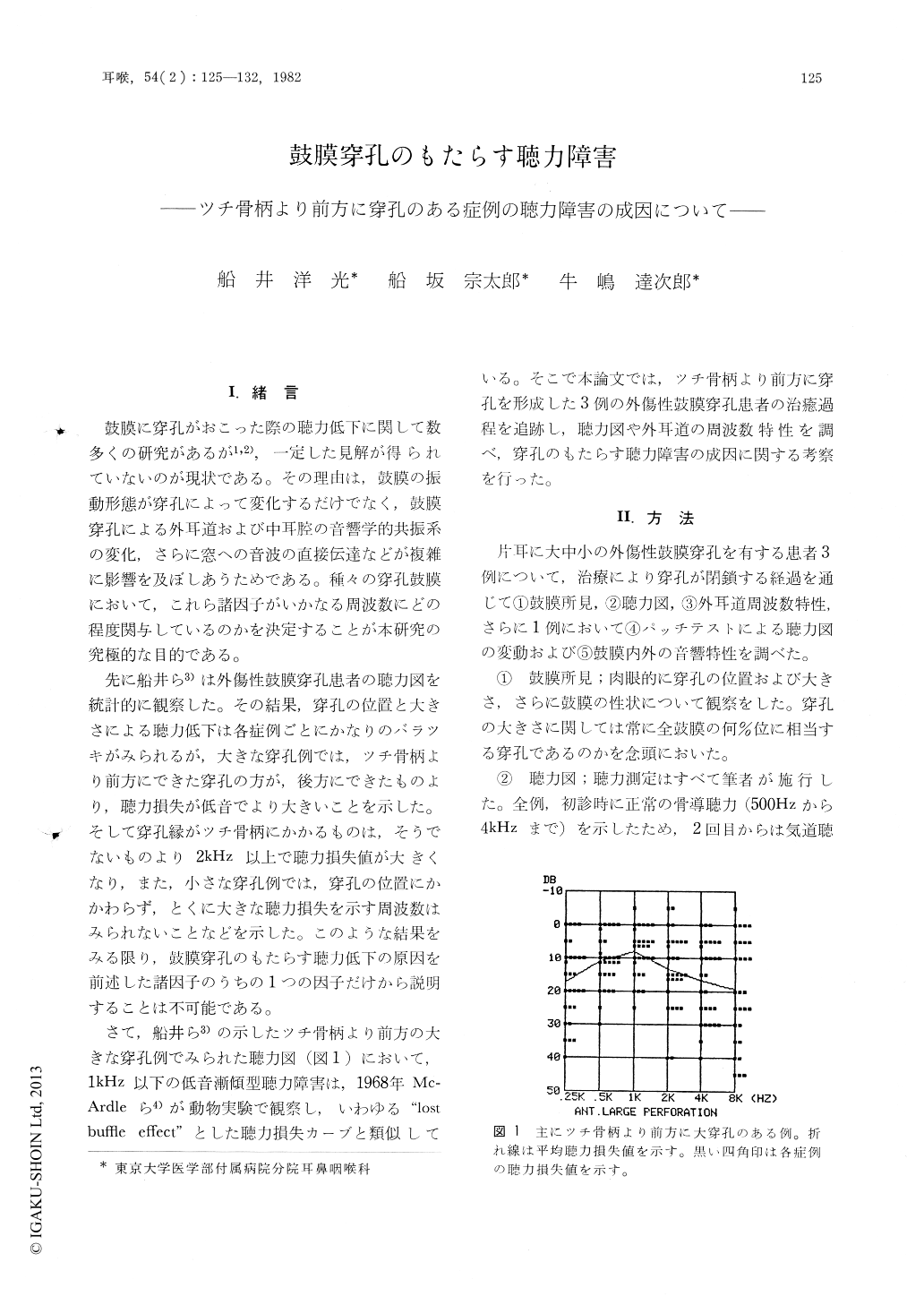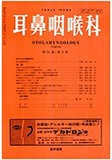Japanese
English
- 有料閲覧
- Abstract 文献概要
- 1ページ目 Look Inside
I.緒言
鼓膜に穿孔がおこった際の聴力低下に関して数多くの研究があるが1,2),一定した見解が得られていないのが現状である。その理由は,鼓膜の振動形態が穿孔によって変化するだけでなく,鼓膜穿孔による外耳道および中耳腔の音響学的共振系の変化,さらに窓への音波の直接伝達などが複雑に影響を及ぼしあうためである。種々の穿孔鼓膜において,これら諸因子がいかなる周波数にどの程度関与しているのかを決定することが本研究の究極的な目的である。
先に船井ら3)は外傷性鼓膜穿孔患者の聴力図を統計的に観察した。その結果,穿孔の位置と大きさによる聴力低下は各症例ごとにかなりのバラツキがみられるが,大きな穿孔例では,ツチ骨柄より前方にできた穿孔の方が,後方にできたものより,聴力損失が低音でより大きいことを示した。そして穿孔縁がツチ骨柄にかかるものは,そうでないものより2kHz以上で聴力損失値が大きくなり,また,小さな穿孔例では,穿孔の位置にかかわらず,とくに大きな聴力損失を示す周波数はみられないことなどを示した。このような結果をみる限り,鼓膜穿孔のもたらす聴力低下の原因を前述した諸因子のうちの1つの因子だけから説明することは不可能である。
Three patients with traumatic perforation at the anterior part of the tympanic membrane were studied throughout medical treatment in order to estimate the effect of perforation on hearing loss.
The following points were investigated in each patient; 1) Otoscopic observation of the tympanic membrane, 2) audiogram, 3) frequency chracteristic in the external auditory meatus. The effect of "patch" and the pressure and the phase of sound at the auditory canal and the tympanic cavity were also studied in one patient.
The results were as follows; 1) The hearing loss at mid- and high-frequency tones depends directly on the size of perforation. 2) Low frequency loss is caused by direct admittance of sound pressure to the middle-ear cavity through a perforation.

Copyright © 1982, Igaku-Shoin Ltd. All rights reserved.


